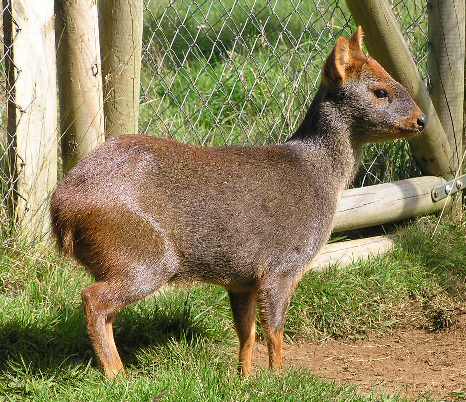Facts About Pudú
Pudus, the smallest deer species in the world, consist of two types: the northern pudu and the southern pudu. Indigenous to South America, the name "pudu" originates from the Mapuche language. The southern pudu is slightly larger than its northern counterpart but both remain diminutive, measuring between 32 to 44 centimeters in height and up to 85 centimeters in length. They are members of the New World deer subfamily, Capreolinae.
Pudus inhabit the temperate rainforests of South America. The northern pudu resides in the Andes mountains across countries such as Colombia, Venezuela, Ecuador, and Peru. In contrast, the southern pudu is found in southern Chile and Argentina.
As herbivores, pudus consume a diverse range of plant material. They are solitary creatures, typically engaging with others only during the breeding season. After a gestation period of approximately 202 to 223 days, a female pudu usually births a single fawn in the austral spring.
Regrettably, pudus are confronted with numerous threats, including habitat loss due to agricultural expansion and logging, as well as overhunting. Conservation initiatives are in place to protect these diminutive deer, involving captive breeding programs and the preservation of their natural habitats within national parks.
The southern pudu is currently classified as "Near Threatened" on the IUCN Red List, while the northern pudu holds a status of "Data Deficient" indicating insufficient information for an accurate assessment. Conservation actions include international trade bans, breeding programs in captivity, and habitat preservation. Despite these measures, pudus remain vulnerable due to habitat degradation, hunting, and competition with other species. The precise population numbers of pudus are unknown, underscoring the necessity of persistent conservation efforts to ensure their survival.

 Peru
Peru